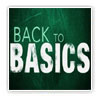I'm Eating Less
Unfortunately, sometimes life gets in the way of life. With the hectic jobs we have and frantic world we live in, there often is not much time left over to eat a meal. Usually in our daily lives we only have time for are the three basic meals: breakfast, lunch, and dinner. This, however, leads to an unseen problem…
The world Famous Formula
We hear it all the time. It’s the simple formula that televisions, radio, magazines, and fitness celebrities tell us day in a day out: Burn more calories than you take in and you will lose weight. Mathematically, it makes perfect sense. In order for the body to lose weight, it has use up more calories than are taken in per day. This allows the body to tap into storage energy supplies (such as fat) to continue to energize the body for its on-going tasks.
Burn more calories
Fueled with this new knowledge, you give it a try; you take a glimpse at your current diet, you may even count up an average of the calories. You then try eating one or two fewer things a day to drop you calories down a little lower. But then after a few weeks you realize that not only do you have less energy, but you’re also not losing any bodyfat. Why is this? In order to understand what is happening here, we need to first understand how the body works.
Enter the Resting Metabolic Rate
Each of our bodies uses a different amount of energy each day to accomplish our daily tasks, including just breathing. Our metabolism (or rate at which burn calories) is based on how efficiently we burn these calories that we have taken in.
Here’s the trick: Our bodies need a certain amount of calories each day for us to just to be alive; no activity included. Yes… that means our bodies actually need food just to wake up and sit there for a 24 hour period! Since each of us have a different Resting Metabolic Rate, this caloric range that we burn daily needs to be calculated out. Once this number is attained, however, it can allow us to find the perfect caloric range that our bodies need to take in for facilitating a fat burning zone in our bodies.
The Problem we see Every Day
Unfortunately, sometimes life gets in the way of life. With the hectic jobs we have and frantic world we live in, there often is not much time left over to eat a meal. Usually in our daily lives we only have time for are the three basic meals: breakfast, lunch, and dinner. This, however, leads to an unseen problem…
Let’s take for example the average times we eat lunch and dinner. A common lunch time is between 12 to 1 o’clock. Then we go back to work and don’t see dinner until around 6 or 7 o’clock. What wrong with this? That’s up to 6 hours without an ounce of food! Sure, we might not get all that hungry, because we know that once we get home, we will eat. Our bodies, on the other hand, do not grasp this concept. The body’s internal checks and balances system recognizes that it has not eating for over 5 hours. It then begins to worry for its survival because it does not know when the next meal is coming. Although you know that food is readily available and that you can eat whenever you need to, you’re body’s metabolism thinks it’s starving and therefore begins to take action to ensure its own survival. So what happens now? The body actually SLOWS DOWN ITS OWN METABOLISM to compensate for the lack of calories. That’s right, you’re body will store energy and fat when you don’t eat enough. So imagine what happens when you don’t eat breakfast! That could be over 12 hours without food! Now we can understand the importance of eating breakfast to speed up our metabolism.
To reverse this fat storing process, we need to ensure that we eat frequently and turn our metabolism into a fueling system. When the body sees that it is getting adequate nutrition, it realizes that it does not to hold on to those calories and burns them as fuel!
So once I know my RMR, I just have to eat less than that to burn fat right?
Negative. Although that seems like the ration thing, there’s actually a very highly overlooked matter that many of us forget… Our RMR is the resting metabolic rate…but in today’s world, when are we ever resting? What must be taken into consideration is amount of additional calories that we burn everyday from resistance and cardiovascular training. This means that our activity level will be relatively to moderately high, regardless of what we are doing aside of training.
Resting Metabolic Rate
So what do I do?
Now what we know what the RMR is and we have taken into consideration how many additional calories must be taken in to account for our daily activity levels, we can figure out what range of calories we need to efficiently burn fat in our bodies.
How can I learn what my RMR is?
Talk to a qualified ( not only certified) Personal Trainer and find out exactly what you’re RMR is and what caloric range you should be aiming for each day. Be sure to ask your trainer any questions that come to mind about your diet and daily lifestyle.
Things to Remember
-Not all calories are created equal and that you must ensure that the proper kinds of calories, not just amount, is consumed.
-Remember the body’s need for water; not only does it flush out our system but it also increases thermogenesis…aka… fat burning!
-Diet alone will not change the shape of your body. Cardiovascular and resistance training is mandatory to see results! We must remember to follow these simple guidelines.
Dave Parise C.P.T
-
Losing Weight Naturally - 3 Total-Body Weight Loss Exercises...
Amazing isnt it? You put a serious effort into losing weight natura
-
New Year New You
Its New Year ? so you decide its time for a New You!Do you often feel
-
Atkins Diet Foods A Guide To Low Carb Food Products
Atkins diet foods are many and varied, so much so that many people are
-
Aspartame vs. sucralose: Which is better?
Aspartame and sucralose are two types of sweeteners that have m
-
Smart Tips And Advice For Successful Weight Loss
If you’re looking to lose weight, you must eat healthier i
-
Brinks Unified Theory Of Nutrition For Weight Loss And Muscle Gain
When people hear the term Unified Theory, some times called the Grand
- DON'T MISS
- Ways to Lose Weight in 3 Weeks
- Which Diet Is The Fairest Of Them All
- I’m A Man & I Hate My Body
- Weight Loss Diet,weight Loss Diet Tips,weight Loss Dietician,indian Dietician
- Im A Holistic Nutritionist. Heres How I Stay Healthy Through The Holidays
- How To Get Rid Of Ugly Cellulite
- The Truth Behind The Portland Weight Loss Plan
- How Medifast Diet Impact You Financially
- Eat Starch, Lose Weight
- Why Diets Fail




